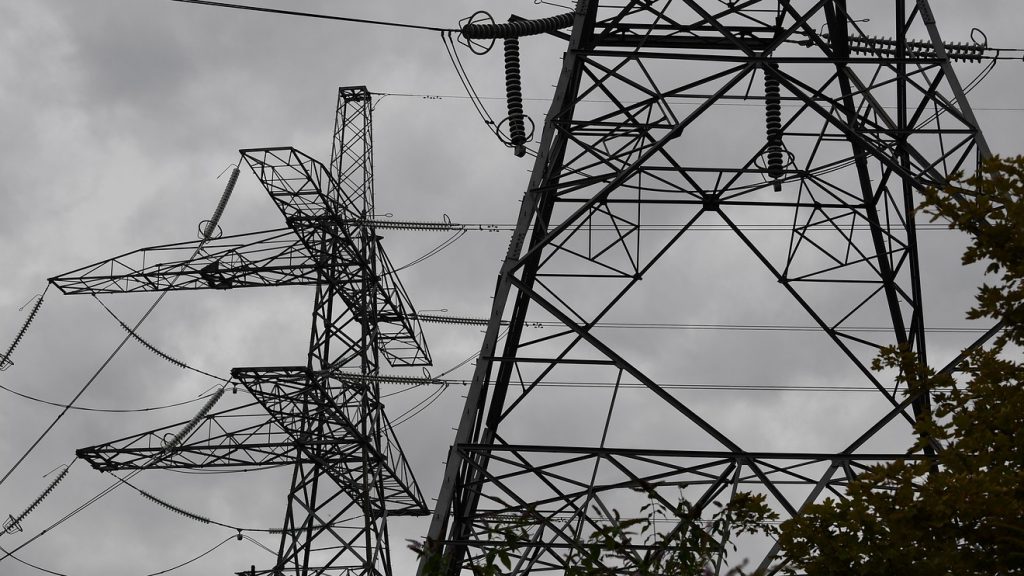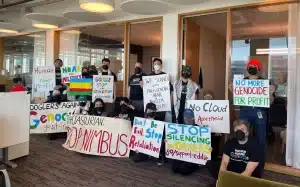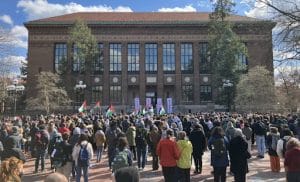Just under two weeks before the 1992 Presidential Election, in the waning administration of George H.W. Bush, congress passed the Energy Policy Act of 1992 (EPAct92). The bill, which passed with near unanimous support in the Senate, served a two fold function. Its intended purpose was to pave the way for the increased production of clean energy as well as providing a framework to make the U.S. energy system more efficient. But, more importantly, it also opened the door for the privatization and the marketization of energy production, formally beginning the process of deregulation by allowing private companies to compete against public utilities. Energy was now no longer treated as a necessary utility, an essential of modern life used for cooking or heating and cooling homes, but as a consumer choice, guided by the market and the capitalist drive toward profit.
Since its passage nearly 30 years ago, just over two dozen states have introduced some version of energy deregulation in the form of private companies selling energy to citizens or acting as middlemen between energy producers and energy consumers. From the move toward privatization and market-focused energy production, the failure and limits of such systems have become more than apparent. With little to no oversight, private companies function to create wealth for their shareholders and operate to maximize profits. This is often accomplished by cutting corners and taking advantage of environmental and man-made disasters when they arise. Such negligence and profiteering are central characteristics of capital-driven energy that has propelled our energy production and distribution into a state of unprecedented instability and inefficiency — both for citizens and the infrastructure itself.
When discussing the negligence of privately-owned energy companies, California’s Pacific Gas & Eclectic (PG&E) ranks among the most outstanding offenders in the era of deregulated energy. An investor-owned utility, PG&E has a long, detailed history of negligence, having to declare bankruptcy in both 2001 and 2019. The company, which has existed in one form or another since the mid nineteenth century, serves some 5.2 million Californians and has continued to be destructive since its reorganizing as PG&E Corporation which split the utility into two subsidiaries: one to serve as a regulated utility, the other as a non-regulated energy business.
Since the 1990s, PG&E has been at the center of multiple fires which have caused billions in dollars in damage and have taken the lives of hundreds. In 2018, the company pleaded guilty to involuntary manslaughter of 84 people as a result of the Camp Fire — California’s most destructive and deadly fire to date. Of course wildfires are caused by multiple factors, and climate change plays a central role in exacerbating fire conditions in northern California; however, private utility companies like PG&E consistently neglect critical infrastructure in an effort to cut overheard and maximize profits.
Neglect isn’t the only byproduct of a privatized energy system. Private energy companies are just as opportunistic, always looking to exploit disaster not just for financial gain but also to maintain their bottom line. In 2001, market manipulation and a demand-supply gap, orchestrated by companies such as Enron, created an artificial shortage which sent wholesale prices soaring some 800 percent. As a result, energy traders made millions from the inflated prices and regular Californians had to deal with rolling blackouts. Eventually PG&E declared bankruptcy and Southern California Edison almost did. Enron, which signed a settlement to pay $1.52 billion, only paid a fraction of that original figure due to its own bankruptcy proceedings. Some executives went to jail, or died before they could, but the damage had been done. This was a clear and early omen of the direction energy production and sales were going to go in the early days of deregulation.
One of the great promises of capitalists regarding deregulation, is that it will bring costs down and provide a better product because companies will be beholden to market forces, people’s consumer choices, etc. However, there is little evidence to suggest that’s true and Texas serves a prime example of the baselessness of that claim. According to a report by the Wall Street Journal, Texas residents have “paid $28 billion more for their power since 2004 than they would have paid at the rates charged to the customers of the state’s traditional utilities.” Not only did they pay more in their own state, but paid 13 percent more than the national average from 2004-2019. Additionally, with the passage of a bill in 1999 which formally deregulated Texas’s energy market, 60 percent of Texas residents were forced to buy their electricity from private companies.
Last month saw the greatest energy crisis in Texas’s history. A major cold snap and ice storm in the southern United States, a likely byproduct of global climate change — caused widespread power outages. But not all the blackouts were, in a phrase, naturally occurring. EROCT-forced blackouts and the shortage in energy caused price spikes as high at $9,000/MWh. In some ways, these were forces working out of control of anyone; this kind of destruction and instability will become increasingly widespread as the global climate changes continue. And as precarity grows, capitalists see further opportunity for exploitation and market manipulation.
However, while ERCOT customers, who represent 90 percent of the state’s residents, were receiving outrageously high electric bills, sometimes in the tens of thousands of dollars, and faced blackouts which lasted days in freezing conditions, counties whose grids exist outside of ERCOT faced relatively little service interruption. El Paso, for instance, which is part of the Western Electricity Coordinating Council, faced very few outages after it decided to winterize its system following a winter storm in 2011. Its disconnection from ERCOT saved El Paso residents from blackouts and price surging.
You might be interested in: Against “Green Capitalism”: The Environmental Struggle Must Be Anti- Capitalist and Revolutionary
The primary objective for energy companies, as with any other private corporation, will always be the generation of profit. Capitalists argue that it is the engine that drives innovation and advancement, bringing power and technology to more people, in a more efficient manner at a cheaper cost. The implication here is that these companies do these to create a better product to serve their customers. But what we’ve seen in the time since the degradation of energy in the United States is a system of negligence, manipulation, and opportunism which starts fires, leaves millions without power, and exploits market loopholes (or just conducts outright illegal activity) to generate high stock prices and larger bonuses, not efficient, cheap energy.
We are at a unique and unprecedented moment in the United States. Climate change and its impacts are becoming clearer every single day. Financial and political elites have become either too cynical or too fearful of systemic change, so the horizon of possibility has been flattened while economic precarity has become the norm for the majority of Americans in the wake of the COVID-19 pandemic. But, in the wake of numerous unfolding challenges, the opportunity for change becomes more and more clear. Just as capitalists prey on disaster, socialists too can find opportunity to advocate for a more equitable, nationalized system run and owned by both consumers and workers as a foundation to build upon other necessary societal changes.
In the United States today, more than 2,000 communities have a public power utility, and communities and cities across the country are creating more publicly owned systems every year. These local communities are the beginning of a movement. They are sites of localized resistance to large corporate owned power, and stitching them together into a nationalized system is the next logical step. In New York City, organizations such as Public Power NYC are organizing to transform the city away from the grip of the Con-Ed and National grids, “creating a publicly owned, democratically run utility with a mandate to achieve safe, reliable, affordable, and 100 percent renewable energy service.” Such initiatives and campaigns understand that in our current paradigm, energy production isn’t treated as a public good, but a commodity to be sold to consumers. In many cities across the country there is no choice when it comes to where one gets their electricity. With a community owned energy system, costs for individual consumers would come down. In communities with existing public power utilities, consumers pay 11 percent less for more reliable power.
But more than the economic benefits, initiatives pushing for public power across the country also recognize that we must fundamentally change how our power is created and who gets a say. And here we find the crucial argument for publicly owned power: it can create nationalized, worker- and consumer-owned and controlled, sustainable systems which generate power from non-carbon sources. Decarbonizing our energy systems is one of the most profound and radical challenges facing the Left today. It is a challenge, not just to energy producers, but to a world system still dependent on fossil fuel exploitation. It is a challenge which strikes at the heart of colonization, exploitation, and ecological destruction across the globe.
Right now, across several states, publicly owned power companies are transitioning towards renewable energy sources. Each state or locality has its own natural resources, so they produce green energy using those resources. In Nebraska, currently the only state in the United States where every home and business is serviced by a publicly owned energy company, companies like Omaha Public Power District are actively transitioning to renewable sources such as wind. Currently, OPPD uses 38.4 percent renewable resources, but with plans such as “Power with Purpose,” which would bring solar energy to utility scale, local, public utilities are actively transitioning toward green energy, both out of a calculated need to diversify their energy resources and a capitulation toward public sentiment. Either way, companies like OPPD (and the statewide utility Nebraska Public Power District) show a model of green resource diversification within a publicly owned utility.
The other crucial shift needed in our current energy paradigm is who determines how energy is produced and distributed. As illustrated above, private companies aren’t beholden to anyone when disaster strikes. Fires can destroy entire towns, burning forests which will most likely never grow back according to new studies which suggest that after fires in the West, “one-third of places that had burned since 2000 had no trees regrowing whatsoever.” People are displaced or killed and companies can declare bankruptcy to skirt around any liability aside from fines which they will most likely not pay in full. In this discussion of who gets a say, a nationalized energy paradigm would take the discussion of energy production away from the realm of markets. Energy production and distribution, freed from market forces and the motivations of CEOs and shareholders, would become beholden to workers and consumers, and the future of energy would become a political question not a monetary one.
In the public power model, power utilities would be community owned and operated, making them liable to the very people who are charged with overseeing and maintaining the system. It is a system which is more dynamic and responsible, not to shareholders and CEOs, but to ordinary citizens who collectively benefit from the maintenance of the utility. And this is an essential reality of life in America today: community bonds have been ruptured by mega corporations and decentralized utilities. The running of the utility would be a source of community pride and unity, bringing citizens together in the agency of control over an essential need of modern life. The necessary fight for a green future starts in each community, and now is the time to start that fight by organizing against the corporate ownership of power in favor of a public, worker- and consumer-run energy system.










